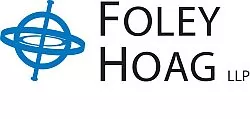- within Corporate/Commercial Law topic(s)
- in Europe
- in Europe
- in Europe
- in Europe
- within Media, Telecoms, IT, Entertainment and Tax topic(s)
The U.S. Securities and Exchange Commission and the current administration has again put the frequency of public-company reporting under the spotlight. Earlier this month, President Trump issued a renewed call to move from quarterly to semiannual reporting. Following this, in an interview on September 19, 2025, SEC Chair Paul Atkins suggested that the agency is prioritizing the issue and working toward a proposal. This activity marks the most significant movement on the topic since 2018.
In 2018, the SEC solicited public input on how to reduce burdens associated with quarterly reports while maintaining disclosure quality and investor protection. That process examined whether the Form 10 Q could be streamlined or harmonized with earnings releases furnished on Form 8 K, and whether flexibility in report timing might curb perceived short-termism. The effort did not result in any rule changes and was dropped from the rulemaking agenda in 2021. Now, the SEC has indicated that its staff is actively evaluating a shift toward semiannual reporting, but has released no details on scope or timing.
Policy arguments on both sides remain familiar but consequential. Proponents of semiannual reporting contend that fewer mandated filings would reduce compliance costs, especially for smaller issuers, and help management focus on long-term strategy rather than three month earnings targets. Investor advocates counter that quarterly reporting underpins market transparency and pricing efficiency, and that six months without a mandated update is too long in fast-moving markets. International experience is mixed: the European Union and United Kingdom moved to semiannual reporting requirements a decade ago, yet some large issuers still provide interim quarterly information voluntarily. The SEC already permits foreign private issuers to report semiannually, offering a reference point but not a one to one precedent for domestic companies.
If the SEC advances a proposal, several design choices will shape real-world impact. One option is outright elimination of the Form 10 Q in favor of a more robust Form 10 K with a mid year update, potentially coupled with enhanced current reporting on Form 8 K for material developments. Another is a flexible regime that allows companies to choose between quarterly and semiannual reports, with guardrails to preserve comparability and timely disclosure. The Commission could also pursue targeted modernization—such as retaining a quarterly cadence but trimming duplicative requirements or better aligning 10 Q disclosures with earnings releases to minimize redundancy. Each path has tradeoffs for issuers and investors, including effects on guidance practices, disclosure controls and procedures, and audit and review cycles.
The Commission's recent statements elevate the likelihood of formal action on this topic, but the contours, timing, and ultimate outcome remain uncertain and will turn on the record developed in the rulemaking process.
The content of this article is intended to provide a general guide to the subject matter. Specialist advice should be sought about your specific circumstances.


